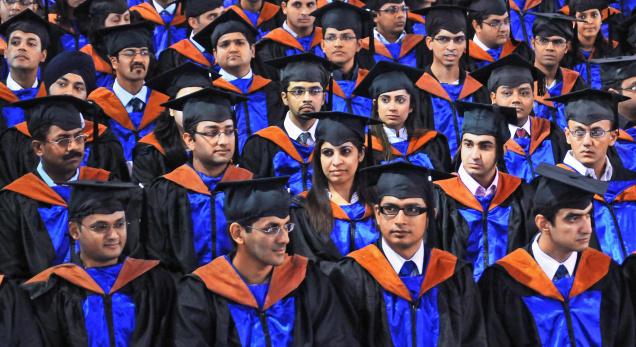A new A utumn edition of «International higher education» (№82) magazine has issued a joint Article of P. Altbach and E. Mathews, who are the professor and founding director of Boston College and the British Council member. The article is called «India’s need for higher education internationalization» and the very name clearly shows us its dedication point.
utumn edition of «International higher education» (№82) magazine has issued a joint Article of P. Altbach and E. Mathews, who are the professor and founding director of Boston College and the British Council member. The article is called «India’s need for higher education internationalization» and the very name clearly shows us its dedication point.
India is on the verge of great power status. The problem is that India generally does not act as a great power, neighter it has the necessary infrastructures. Let us take one small example – higher education. India dramatically underinvests in its universities and colleges. Most large countries only have not only world-class universities but also an effective international higher education «foreign policy».
The establishment of Nalanda University and the South Asian University is some small initiative to develop internationally competitive higher education. But are they enough when compared to India’s aspirations to be recognized on par with China’s rising global stature?
Higher education internationalization is at the forefront of academic thinking globally. According to the latest figures available with Association of Indian Universities, during the year 2012-2013 approximately 21000 international students were pursuing higher education in 121 institutions in India – compared to the 200 000 Indian’s studying abroad. Japan and China each host more than 100 000 international students, and the USA hosts more than 800 000.
Most of India’s international students are from South Asia, and regionalization might be a better term than internationalization. The large majority of non-Indian students study in private universities and are hardly represented in the public sector.
Internationalization has so far not been integrated into strategic planning at the majority of Indian higher educational institutions. Universities alone cannot be blamed for this situation, because currently India does not have a national policy governing the entry or operation of foreign higher educational institutions. Only a minority of Indian universities and colleges have significant alliances with foreign institutions for activities including development and delivery of courses, joint research, or the exchange of staff and students. The new private universities are very active in promoting internationalization through the adoption of foreign curriculum, twinning programs. Yet, their objectives are mainly aimed at improving their market position, through the promise of preparing students for the globally integrated economic environment.
There is a general feeling that integration of foreign educational programs into Indian institutions will provide an efficient way to improve academic quality and standards.
The full version of the article can be found here:
http://ejournals.bc.edu/ojs/index.php/ihe/article/view/8874

